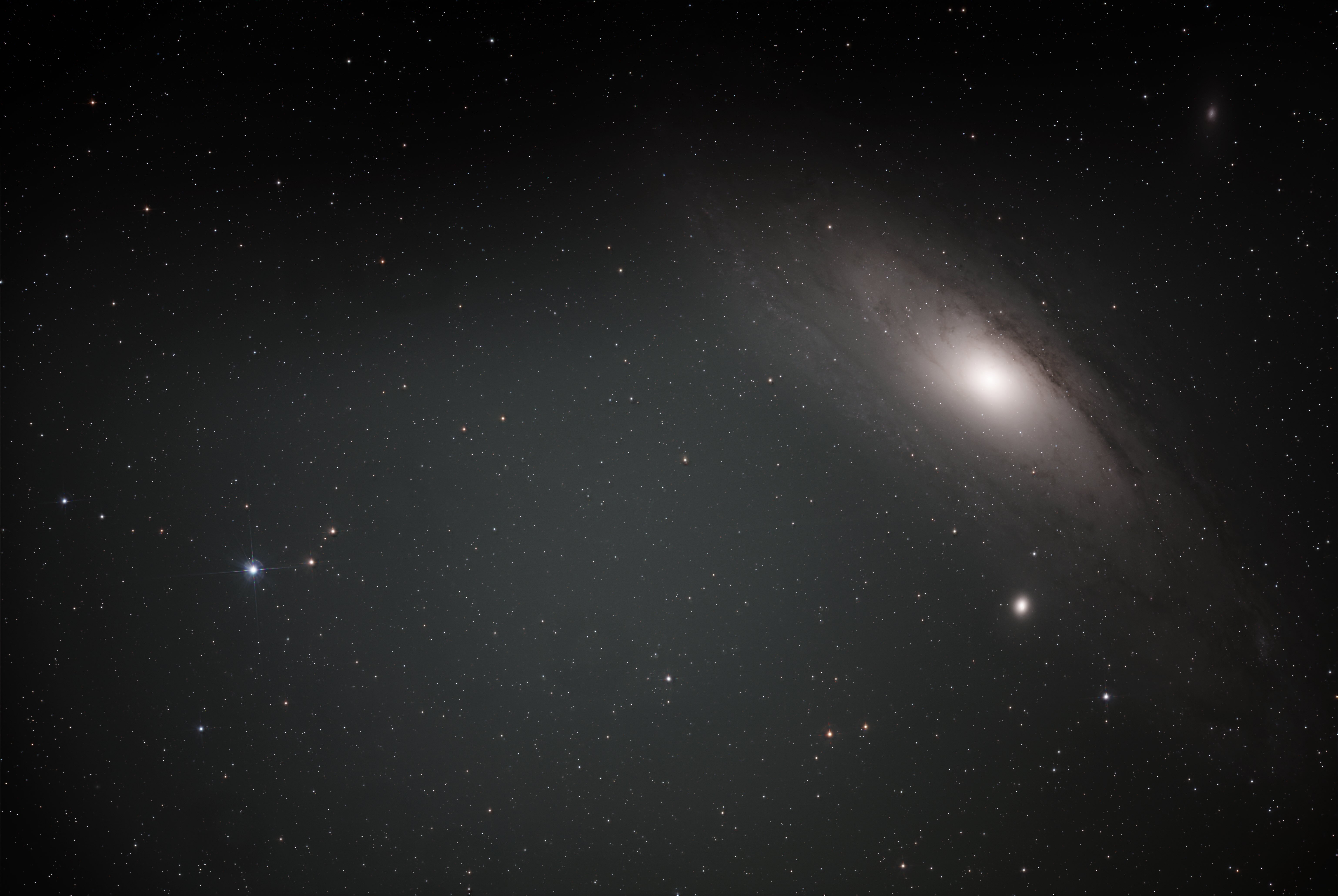Well, I’ve gotten into this hobby of astrophotogrophy (find out more about that here). I took this photo across 3 hours in one night with LRGB filters. 90 frames of Luminance, 30 frames of R, G, and B each. All at 60 second exposures. I’m quite happy with the result given it’s the very first integration I’ve actually done.
From what I can tell the low-hanging fruit to improve this is:
- Better collimation
- I am pretty sure my CarbonStar 150 is quite badly collimated, so I need to spend some time ensuring this is spot on. Luckily I have some options for getting this done without needing everything setup outside.
- Get an auto-focuser
- I actually already have one, so next time there’s clear skies I will have a better time keeping focus
- More data
- I mean, this is always going to be the case, right?
- Flats
- I know enough to know I need these, but I don’t have a great way to take these yet. I also want to do some experients with dark and bias frames. Since everyone claims you don’t need them with modern, cooled, CCDs…but I’d like to give myself an opportunity to reproduce that experiment.
- Better tracking
- I’m still getting to know PHD2 and in general there’s a lot of room for improvement with my tracking setup. I don’t think I had good focus w/ my OAG/Guide camera and there’s some more there I need to dig into.
- Backfocus
- As I aluded to in “better tracking” I wasn’t able to get my guider and main camera in focus without a 10mm spacer added to the main camera. This means my backfocus was at 65mm instead of 55mm. I am ignorant enough to not know exactly how that impacts the final iamge, but not ignorant enough to not know about backfocus.
